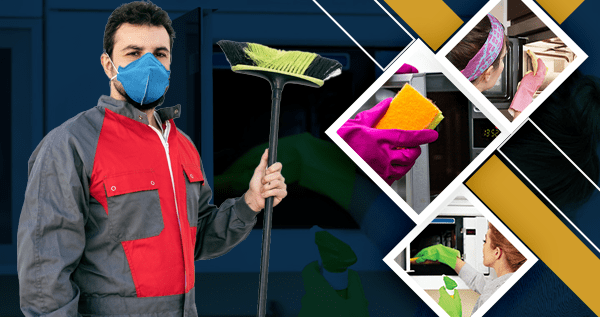Best Practices for Cleaning and Disinfecting Warehouse Equipment and Machinery
Introduction
Warehouse equipment and machinery play a crucial role in ensuring efficient operations and productivity in a warehouse setting. However, the ongoing COVID-19 pandemic has emphasized the need for proper cleaning and disinfection practices to maintain a safe and healthy environment for employees and customers. In this article, we will discuss the best practices for cleaning and disinfecting warehouse equipment and machinery.
Importance of Cleaning and Disinfecting Warehouse Equipment
Cleaning and disinfecting warehouse equipment and machinery is important for several reasons:
- Promoting a safe working environment: Regular cleaning and disinfection help remove dirt, dust, and potentially harmful pathogens, reducing the risk of accidents and injuries.
- Preventing the spread of diseases: Germs and viruses can easily spread through contact with contaminated surfaces. Cleaning and disinfection protocols help minimize the risk of cross-contamination and the transmission of illnesses.
- Protecting equipment lifespan: Regular maintenance, including cleaning and disinfection, helps extend the lifespan of warehouse equipment, ensuring optimal performance and reducing the need for costly repairs or replacements.
General Cleaning Practices
Before diving into specific equipment and machinery cleaning practices, it’s important to establish some general cleaning guidelines:
- Wear personal protective equipment (PPE) such as gloves, masks, and safety goggles when handling cleaning products.
- Read and follow the manufacturer’s instructions for cleaning each piece of equipment or machinery.
- Use appropriate cleaning tools, such as brushes, microfiber cloths, and vacuums, to ensure thorough cleaning.
- Regularly inspect and maintain cleaning equipment to ensure optimal functionality.
Cleaning and Disinfecting Warehouse Equipment
Proper cleaning and disinfection processes vary depending on the type of equipment and its intended use. Here are some best practices for commonly found warehouse equipment:
Pallet Jacks and Forklifts
Pallet jacks and forklifts play a critical role in warehouse operations. To clean and disinfect these equipment:
- Remove any visible debris from the equipment using a brush or vacuum cleaner.
- Use mild detergent or an appropriate cleaning solution to wipe down all surfaces, including handles, controls, and seats.
- For disinfection, use an EPA-approved disinfectant and follow the manufacturer’s instructions for proper application.
- Pay special attention to high-touch areas, such as control panels and steering wheels.
- Allow the equipment to air dry before using it again.
Racking Systems
Racking systems provide essential storage space in warehouses. Here’s how to clean and disinfect them:
- Remove all items from the shelves and thoroughly clean them with a suitable cleaning solution.
- Inspect the shelves for any signs of damage or wear.
- Wipe down the shelves and frames with a disinfectant solution, paying extra attention to high-touch areas.
- Allow the racks to air dry before restocking them.
Conveyor Belts and Sorting Systems
Conveyor belts and sorting systems facilitate the movement of goods within a warehouse. Follow these steps to clean and disinfect them:
- Shut down the equipment and unplug it from its power source.
- Remove any loose debris or dust using a soft brush or vacuum cleaner.
- Wipe down the surfaces of the conveyors and sorting equipment with a suitable cleaning solution.
- For disinfection, select an appropriate disinfectant that is safe for the equipment’s material and follow the manufacturer’s instructions.
- Ensure the equipment is completely dry before restarting it.
Workstations and Handheld Tools
Workstations and handheld tools require regular cleaning and disinfection to maintain a safe and healthy workspace. Consider the following steps:
- Wipe down workstations, including desks, tables, and chairs, with a suitable cleaning solution.
- Disinfect commonly touched surfaces such as computer keyboards, mice, and telephone receivers.
- Handheld tools should be cleaned after each use with a mild detergent or cleaning solution.
- Regularly inspect tools for wear and tear, and replace or repair as needed.
Conclusion
Implementing proper cleaning and disinfection practices for warehouse equipment and machinery is crucial for promoting a safe and healthy working environment. By following the best practices outlined in this article, warehouse operators can ensure clean and well-maintained equipment, reduce the risk of contamination, and improve overall operational efficiency. At Crystal Facilities Management, we understand the importance of maintaining a clean and sanitized warehouse. Our team of professionals is trained to follow industry-leading cleaning protocols to meet all your warehouse cleaning needs.













